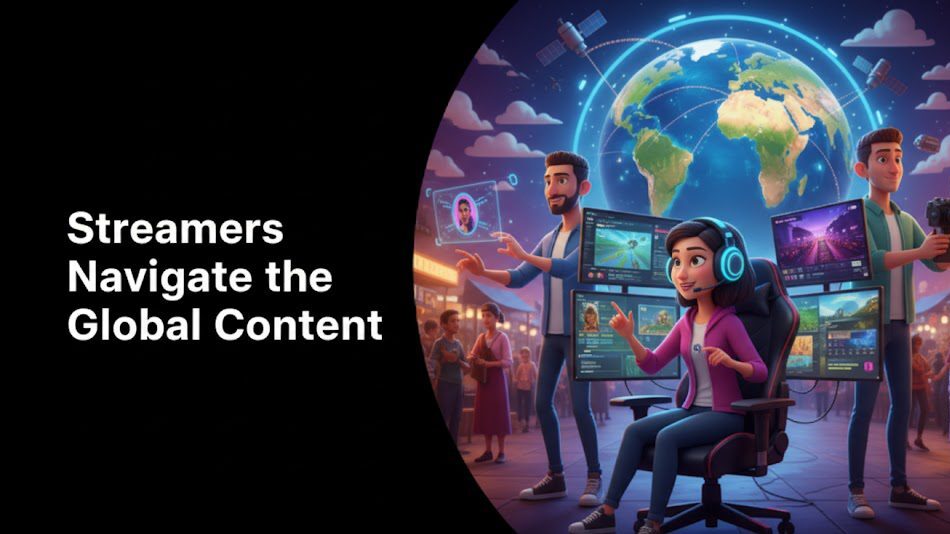Introduction
When your favorite TV show gets re-commissioned for another season, it’s not just luck—there’s a strategic decision-making process behind it. But what exactly makes a show worth renewing? Is it all about ratings, or do other factors play a role? In this article, we’ll break down the key reasons why TV shows get re-commissioned, from audience engagement and financial viability to creative potential and industry trends.
By the end of this read, you’ll understand:
✔️ The business and creative factors that influence renewals
✔️ How networks and streamers decide which shows to keep
✔️ The evolving landscape of content commissioning
✔️ How Vitrina helps entertainment companies track and predict re-commissioning trends
Let’s dive into the fascinating world of TV renewals!
Table of content
- Introduction
- What Does “Re-Commissioned” Mean?
- Key Factors in TV Show Renewals
- Audience Metrics and Viewership
- Financial Viability and Advertising Revenue
- Streaming Platform Strategies
- Critical Acclaim and Awards
- Intellectual Property and Franchising
- Creator and Cast Availability
- Network and Platform Branding
- How Vitrina Helps with TV Re-Commissioning
- Key Takeaways
- FAQs
Maximize Your Show’s Re-Commissioning Potential

What Does “Re-Commissioned” Mean?
A TV show is “re-commissioned” when a broadcaster or streaming platform orders additional seasons or episodes after evaluating its performance. Unlike traditional renewals, which may imply a contract continuation, re-commissioning often involves new negotiations, financial adjustments, and creative evaluations.
Key Factors in TV Show Renewals
Re-commissioning a TV show depends on a combination of commercial, audience, and creative elements. Let’s explore the most important factors that determine whether a series gets a new lease on life.
Audience Metrics and Viewership
One of the biggest drivers of re-commissioning is viewership performance. Networks and streamers analyze:
- Live TV Ratings (for broadcast/cable networks)
- Streaming Hours (for digital platforms)
- DVR +7 Viewership (delayed viewing impact)
- Social Media Engagement (fan discussions, trends)
High-performing shows with strong engagement often secure quick renewals.
Stay Ahead in the Entertainment Industry

Financial Viability and Advertising Revenue
A show’s ability to generate revenue through advertising, subscriptions, and licensing is crucial. Key considerations include:
- Ad revenue potential (for ad-supported networks)
- Subscriber retention rates (for streaming platforms)
- International sales & syndication opportunities
- Merchandising and franchise potential
If a show boosts a network’s profitability, it’s more likely to return.
Streaming Platform Strategies
For Netflix, Amazon Prime, and Disney+, re-commissioning decisions are often based on:
- Binge-worthiness and retention rates
- Content library diversification
- Exclusive deals and franchise expansion
- Competitive landscape analysis
A show might not need massive ratings, but if it keeps subscribers engaged, it has a strong case for renewal.
Critical Acclaim and Awards
Some shows get re-commissioned due to their critical impact, even if they aren’t commercial hits. Awards, reviews, and industry recognition can influence renewal decisions.
Intellectual Property and Franchising
Networks prioritize shows with franchise potential. Spin-offs, merchandise sales, and cross-platform expansions play a role in re-commissioning.
Creator and Cast Availability
If a show’s creators or lead actors are unavailable for another season, networks may reconsider its future. Production schedules and contract negotiations affect re-commissioning.
Network and Platform Branding
Some shows align with a network’s branding strategy. Even if they aren’t top-rated, they enhance the network’s image or fulfill strategic content goals.
How Vitrina Helps with TV Re-Commissioning
Vitrina empowers production houses, networks, and streamers by providing:
✅ Global tracking of TV projects in real-time
✅ Comprehensive data on renewals, cancellations, and content trends
✅ Deep metadata insights on financing, partnerships, and audience demand
✅ Direct access to decision-makers, producers, and key executives
With Vitrina, companies stay ahead of industry trends and make data-driven decisions for re-commissioning.
Key Takeaways
- Ratings and financial success heavily impact renewals.
- Streaming platforms prioritize subscriber retention and engagement.
- Awards and critical acclaim can sometimes secure renewals.
- Franchising and IP expansion influence long-term viability.
- Vitrina provides industry-leading insights to track re-commissioning trends.
Frequently Asked Questions
Renewal is a straightforward contract extension, while re-commissioning often involves re-evaluating the show’s performance and negotiating new terms.
Yes! Social media campaigns have helped shows get re-commissioned when networks see strong audience demand.
Shows that perform well globally often have a better chance of getting re-commissioned, even if domestic ratings are moderate.





































